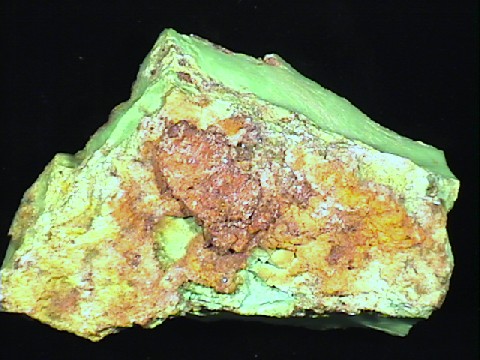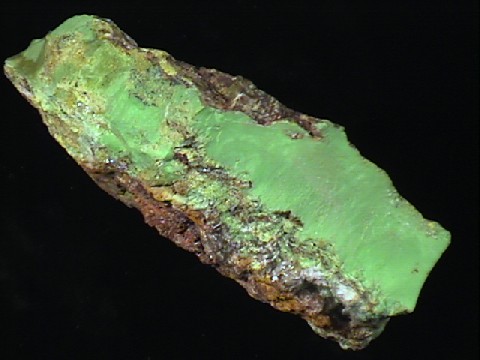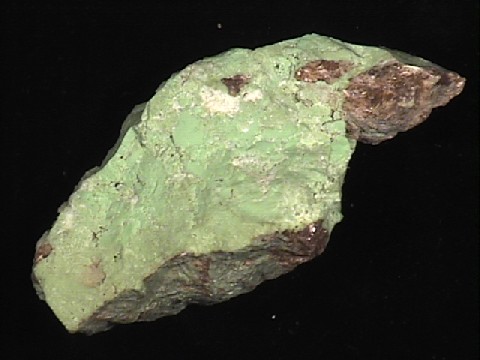 THE MINERAL GASPEITE
THE MINERAL GASPEITE
- Chemistry: (Ni, Mg, Fe)CO3, Nickel Magnesium Iron Carbonate
- Class: Carbonate
- Group: Calcite
- Uses: As an ornamental stone and as mineral specimens.
Specimens
Gaspeite is found as a secondary mineral around nickel sulfide deposits. It was thought of as just a gangue mineral by miners when it was encountered and usually placed in the mines dumps or tailings. A gangue mineral is a mineral that probably contains the ore metal, but its chemistry is such that processing it is either impossible or unprofitable. Such was the case with gaspeite despite being rich in nickel. Of course lapidary craftsmen have a different view of gaspeite's profitability! Gaspeite is named for its type locality of Gaspe' Peninsula, Lemieux Township, Gaspe'-ouest County, Quebec, Canada, but the best material of late is coming from North of Perth, Australia.
PHYSICAL CHARACTERISTICS:
- Color is a pale green to apple green.
- Luster is vitreous to dull.
- Transparency: Crystals are usually translucent, massive material is opaque.
- Crystal System is trigonal; bar 3 2/m.
- Crystal Habits include rhombohedrons and scalenohedrons, but crystals are very rare. More commonly found massive.
- Cleavage is perfect in 3 directions forming rhombohedrons.
- Fracture is uneven.
- Hardness is 4.5 - 5.
- Specific Gravity is 3.7 (somewhat heavy for a translucent mineral).
- Streak is yellowish green.
- Other Characteristics:
Effervesces slightly in hydrochloric acid. - Associated Minerals include millerite, pentlandite, skutterudite, annabergite and other nickel minerals.
- Notable Occurrences include the type locality of Gaspe' Peninsula, Lemieux Township, Gaspe'-ouest County, Quebec and Sudbury, Ontario, Canada and a new source of carvable material from Kambalda and Widgie Mooltha which is North of Perth, Australia.
- Best Field Indicators are color, locality, reaction to acids, cleavage and density.








